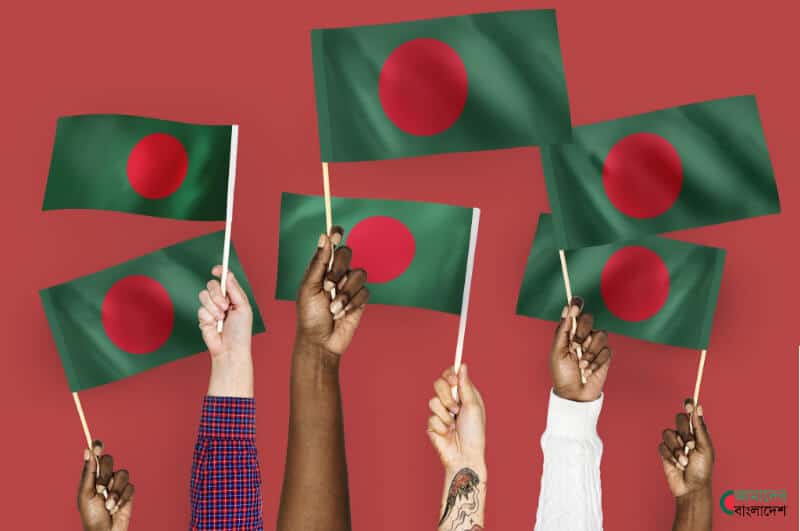Bangladesh is lush greenery South Asian country located on the Bay of Bengal. Bangladesh is located to the east of India and is almost surrounded by India and only shares a small border with Myanmar to its southeast. Bangladesh is divided into eight administrative divisions and the divisions are subdivided into 64 districts. Among these districts, Rangamati is the largest district of Bangladesh with an area of 6116 km2. The total population of Rangamati is 5.96 lakhs according to the 2021 census.
History Of Rangamati
Rangamati district was a contesting ground for the kings of Tripura and Arakan. Before the East India Company came into this region, Rangamati was known as the Reang/Riang Country. In 1566, after the Muslim invasion, Rangamati came under the Mughal Empire. In 1737, Sher Mosta Khan who was a tribal leader took refuge with the Mughals, and then the Chakma settlement began along with various other settlements of varying ethnicity.
Geography Of Rangamati
Rangamati is a hill district in south-eastern Bangladesh. It is a part of the Chittagong Division. Rangamati district is bordered by the Tripura state of India to the north, Bandarban District to the south, Mizoram State of India and the Chin State of Myanmar to the east, and Khagrachari and Chittagong Districts to the west. It is the only district in Bangladesh that shares international borders with two countries, India and Myanmar. The Rangamati town is the headquarters of this district. Among the total area, 1292 km2 is riverine and 4825 km2 is under forest vegetation.
Demography Of Rangamati
According to the 2021 census Rangamati has a total population of 5.96 lakhs among which indigenous communities constitute 52% and non-indigenous Bengalis constitute 48%. The total number of males in this district is 287,060 and the total number of females is 238,043. The population density in this district is 83 per square kilometer. The indigenous communities that live in the district are Chakma, Marma, Tanchangya, indigenous Assamese people, Kent(Kaibarta), Tripuri, Pangkhua, Lushai, Khiang, Murang, Rakhine, Chak, Bawm, Khumi, etc. According to the 2011 census, there were a total of 386,153 indigenous people in the district. In the Rangamati district, there are 291 government primary schools, 120 non-government primary schools, 22 junior schools, 6 government high schools, 45 non-government high schools, 2 government colleges, 13 non-government colleges, 61 madrasa, and 7 technical schools. The Rangamati Medical College and Rangamati Science and Technology University are also located throughout the district.
Religious Composition Of Rangamati
| Religion | 1991 | 2001 | 2011 | Perc 2011 | PGR 91-11 |
| Muslim | 157,650 | 187,132 | 209,465 | 35.1% | 32.9% |
| Hindu | 22,543 | 26,944 | 30,244 | 5.1% | 34.2% |
| Christian | 4,498 | 8,781 | 8,663 | 1.5% | 92.5% |
| Buddhist | 216,067 | 284,906 | 347,038 | 58.2% | 60.6% |
| Others | 630 | 419 | 569 | 0.1% | -9.7% |
| Total | 401,388 | 508,182 | 595,979 | 100.0% | 48% |
Economy Of Rangamati
The economy of Rangamati is agriculture-based where more than 41.94% of the total population is related to agricultural works. Other occupational percentages of this district are agricultural laborer 12.06%, wage laborer 4.95%, commerce 8.22%, service 13.04%, fishing 2.02%, industry 4.57%, forestry 3.2% and others 10%. In Rangamati, a total of 12275 hectares of land is used for cultivation, producing food and non-food crops. Crops grown in Rangamati are rice, potato, corn, mustard seed, cotton, jute, etc. Some common fruits grown in Rangamati are mango, jackfruit, banana, pineapple, litchi, blackberry, etc. Many people in Rangamati are also involved in cottage industries that include weaving, blacksmithing, and woodwork. There are some major industries located in Rangamati including Chandraghona paper and rayon mill, Plywood Factory, Ghagra Textile, and a Satellite Station at Betbunia.
Sub-Districts Of Rangamati
The Rangamati district consists of 10 Upazilas, 1 municipality, 50 union parishads, 162 Mouzas, and 1347 villages. The municipality has 9 wards and 35 mahallas. The upazilas of Rangamati are –
- Rangamati Sadar Upazila
- Belaichhari Upazila
- Bagaichhari Upazila
- Barkal Upazila
- Juraichhari Upazila
- Rajasthali Upazila
- Kaptai Upazila
- Langadu Upazila
- Naniarchar Upazila
- Kaukhali Upazila
Rangamati Sadar Upazila
Rangamati Sadar is located at 22.6500°N 92.1833°E. It has 13814 households and a total area of 546.49 km2. This Upazila has six union parishads: Balukhali, Bandukbhanga, Jibtali, Kutukchari, Mogban, and Sapchari. The union parishads are subdivided into 21 mauzas and 178 villages.
Belaichhari Upazila
Belaichari Upazila is located at 22.4667°N 92.3750°E. It has a total area of 745.92 km2. It is divided into three union parishads: Belaichari, Farua, and Kengrachari. The union parishads are subdivided into 9 mauzas and 59 villages.
Bagaichhari Upazila
Baghaichhari Upazila is located at 23.1500°N 92.1917°E. It has a total area of 1931.28 km2. This Upazila is divided into Baghaichari Municipality and eight union parishads: Amtali, Baghaichari, Bongoltali, Khedarmara, Marisha, Rupokari, Sajek, and Sharoyatali. The union parishads are subdivided into 19 mauzas and 303 villages.
Barkal Upazila
This Upazila has a total area of 760.88 km2. It is divided into five union parishads: Aimachara, Barkal, Bushanchara, Borohorina, and Subalong. The union parishads are subdivided into 28 mauzas and 180 villages. The location of this Upazila is 22.7333°N 92.3583°E.
Juraichhari Upazila
Juraichhari is located at 22.6667°N 92.3833°E and it has a total area of 606.05 km2. This Upazila consists of four union parishads: Banjugichhara, Dumdumya, Juraichhari, and Maidang. The union parishads are subdivided into 11 mauzas and 105 villages.
Rajasthali Upazila
This Upazila has an area of 145.04 km2 and it is located at 22.3833°N 92.2417°E. Rajasthali Upazila consists of three union parishads: Bangalhalia, Gaindya, and Ghilachari. The union parishads are subdivided into 9 mauzas and 106 villages.
Kaptai Upazila
This Upazila is located at 22.5000°N 92.2167°E and it has a total area of 259 km2. This Upazila is divided into five union parishads: Chandraghona, Chitmorom, Kaptai, Raikhali, and Waggya. The union parishads are subdivided into 10 mauzas and 144 villages.
Langadu Upazila
This Upazila has an area of 388.5 km2 and it is located at 22.9500°N 92.1500°E. This Upazila consists of seven union parishads: Atarakchara, Bogachattar, Gulshakhali, Kalapakujja, Langadu, Maeinimukh, and Vasannadam. The union parishads are subdivided into 25 mauzas and 138 villages.
Naniarchar Upazila
Naniarchar Upazila is located at 22.8583°N 92.1167°E and it has a total area of 393.68 km2. There are four union parishads in this Upazila and they are Burighat, Ghilachhari, Naniarchar, and Sabekkhong. These union parishads are subdivided into 20 mauzas and 158 villages.
Kaukhali Upazila
The total area of this Upazila is 339.29 km2 and it is located at 22°32′N 92°1′E. There are four union parishads in this Upazila and they are Betbunia, Fatikchhari, Ghagra, and Kalampati. The union parishads are subdivided into 11 mauzas and 149 villages.
Tourist Spots Of Rangamati District
Kaptai Lake
Kaptai Lake is the largest lake in Bangladesh and it is also a man-made lake. This lake is located in the Kaptai Upazila under the Rangamati District of Chittagong Division. This lake is the result of the dam on the Karnaphuli River. The dam is part of the Karnaphuli Hydro-electric project. The average depth of this lake is 100 feet (30 m) and the maximum depth is 490 feet (150 m).
Hanging Bridge
The Bengali name of this bridge is Jhulonto Bridge and it is also a very popular tourist destination in the Rangamati district. This bridge is established on Kaptai Lake. The total height of this bridge is 335 feet and it is a landmark icon of Rangamati.
Kaptai National Park
Kaptai National Park is located in the Rangamati district and it is a major national park of Bangladesh. This park was established in 1999 and it has an area of 13,498.0 Acres. The notable animals of this national park are Asian elephant, western hoolock gibbon, Phayre’s leaf monkey, capped leaf monkey, dholes, wild boar, sambar, barking deer, clouded leopard, rock python, etc.
Shuvolong Waterfalls
This waterfall is in Barkol sub-district, which is located about 25 kilometers away from Rangamati town. The water of Shuvolong Waterfall falls from as high as 300 feet and over the last few years, this place has become a popular tourist destination. You can go to this waterfall by speed boat or motorboat from Rangamati.
Sajek Valley
Over the last few years, Sajek Valley has become the most popular tourist destination in Bangladesh. Sajek is a union at Baghaichari Upazila in Rangamati districts and the Sajek Valley located in the North angle of Rangamati, near the Mizoram border boundary area. Sajek Valley is 1,800 ft high from sea level and most tourist attractions of this spot are sunset, rain, morning, evening, floating clouds, etc.

